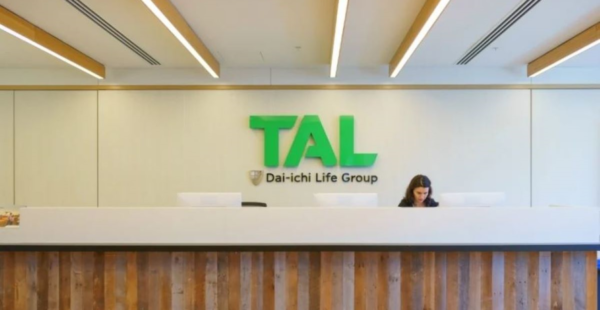IP Insurance for the financially evolving client

Financial Newswire’s life/risk specialist, Col Fullagar explains the intricacies surrounding Income Protection Insurance.
When asked the question of what income protection benefit amount to recommend, the answer used to be 75% of earnings albeit these days 75 becomes 70, thanks to APRA. The reason given, however, has not changed ie “That is the maximum allowed.”
Unfortunately, whilst a recommendation made on this basis may appear to be and may in fact actually be appropriate for many clients, the reason espoused is flawed if for no other reason than 70% is not the maximum allowed bearing in mind the existence of options such as superannuation protection benefits.
However, even if 70% was indicatively accepted as the maximum, which for simplicity will be the case in this article, the question must be asked Why would an adviser for the majority of clients recommend the maximum rather than 64% or even 48%?
Further, when a client earns a higher income and accumulates assets to the extent that insurers offer lower percentages of cover or even hesitate to offer cover at all, are there ways in which an adviser can still ensure appropriate protection is made available.
The intent of this article is therefore to consider the logic behind income protection insurance recommendations for a client whose financial position evolves from a relatively low level of income through to a high income and beyond.
To represent a client whose financial position is evolving, the approach taken will be to consider three clients each of whom will be at a pre-determined point on the financial spectrum. By establishing and linking the logic behind an income protection recommendation for each of these clients, the questions of “How much” and “Why” can be answered.
The three clients are:
CLIENT 1
Client 1 has a low to moderate level of earned income ie up to $200,000 and no or few material assets.
Client 1’s income will generically be 100% utilised in what will be termed Core Spending such as:
- Food and clothing;
- Transport;
- Holidays;
- Education;
- Rent; and
- Medical and dental.
In addition, there will be compulsory superannuation and limited short-term savings.
Because all but 100% of earned income will be focused on the above and bearing in mind the maximum cover available is 70% of earned income, it is clearly the case that Client 1 will need as much financial protection as they can get and afford.
It is for this reason that, for Client 1, the recommendation is for the maximum income protection cover available.
CLIENT 2
Client 2 has a relatively high level of earned income ie up to $400,000, and only one material assets, the family home
As Client 1 morphs into Client 2, the nature of what they do with their earned income will likely change.
Client 2 will no doubt continue to spend in the core areas, but they will increasingly engage in what will be described as Discretionary Spending such as:
- More expensive food, clothing, transport and holidays;
- Maybe a private school education for their children;
- Purchasing a home and taking out a mortgage rather than renting; and
- Accessing private health care.
With higher income also comes a greater ability to contribute to superannuation in excess of that which is compulsory plus there will be an increased ability to save and invest.
Naturally, what could be termed Discretionary Spending will differ considerably for each individual but, from the insurer’s perspective, whilst the importance of protecting core spending and some discretionary spending will be acknowledged, there will be an increasing reticence to protect what might be considered Luxury Spending.
It is for this reason that as Client 2’s earned income increases, the proportion of it that can be covered under income protection insurance reduces giving rise to cover limits along the lines of:
- 70% of the first $250,000 of earned income;
- 50% of the next $250,000; and
- 20% of the balance to the overall maximum cover limit of $30,000 a month ie which would be represented by an annual earned income of $800,000.
Because Client 2 will have a reducing access to income protection insurance, there might again be a tendency to recommend the maximum levels of cover available.
CLIENT 3
Client 3 has a high level of earned income ie in excess of $400,000, and several material assets resulting in significant levels of unearned income and/or a high net worth; all of which are perceived problems from the insurer’s perspective.
It is Client 3 that provides advisers with the greatest challenge and opportunity because the focus for this client may not be so much on earned income but rather investment or unearned income and assets.
Unearned Income
From an insurer’s perspective, the concern with unearned income is the extent to which it continues if the insured person is not working, irrespective of the reason, for example not working by choice or by virtue of sickness or injury.
Not all unearned income is created equal in so far that relevance is tied to two qualities ie Longevity, the extent to which the unearned income would continue for a reasonable period of time and Consistency, the extent to which the continuing unearned income would continue at a steady rate. An example of these two qualities in operation would be net income from a rental property or equity dividends which is why these would be a material consideration when assessing a client’s post-disability situation.
If unearned income was of a windfall nature such as a lottery win or an inheritance, it should be of little immediate relevance.
Assets
As per unearned income, not all assets are created equal. Relevant factors include:
- The value of the asset ie the amount that would be realised if the asset was sold noting that only significant assets need to be considered albeit with a recognition that the word “significant” is subjective;
- Whether the asset value is appreciating or depreciating and, if so, at what rate;
- The liquidity of the asset ie the extent to which its value can be easily realised;
- Whether the asset is freehold and, as such, is less likely to need “protection” or there is a financial commitment needed to maintain the asset by way of maintenance costs or retain the asset by way of loan repayments. If the latter, what are the relevant terms, for example, repayment amount and duration of loan; and
- The client’s attitude towards the asset, for example, is it important, strategically and/or emotionally or not.
The client’s attitude is assessed by asking the question “If you were totally and permanently disabled, what action would you take in regard to the asset”. The answer would give rise to three asset types ………
- Short Term Assets
In this category would fall assets of little importance that the client would be prepared to or have no choice but to realise in the short term, with short term being taken as one to two years.
Short term assets in this category might typically be those which:
- Have a reasonable value;
- Have a low or negative rate of appreciation;
- Would be reasonably liquid; and
- Require a financial outlay to retain them.
Further, the client would likely have a low emotional attachment to the asset.
Examples might include:
- Luxury or fun items such as boats, jet skis, luxury cars which may have a cost associated with their maintenance and retention and which, because of the medical condition of the client may be of little future value to them; and/or
- Investment properties such as vacant land which, by definition, are rarely used but again have a maintenance and retention cost that might be difficult to maintain in the client’s new circumstance.
Whilst the client may wish to realise these assets in the short term, they would want to avoid a forced sale scenario. To enable a reasonable period of breathing space, the net maintenance and retention costs might be covered under an income protection insurance policy with a one or two year benefit period.
If the intention was to realise the asset within one or two years and then invest the net proceeds to produce more unearned income, the realised value and potential investment return on those funds would be considered.
- Medium Term Assets
In this category would fall assets of some, but not critical importance that the client would be prepared to or have no choice but to realise in the medium term, for example within five years.
Medium term assets in this category might typically be those which:
- Again, have a reasonable value;
- Have a relatively good rate of appreciation;
- Would be reasonably liquid; and
- Require a financial outlay to retain the asset.
If the client has an emotional attachment to the asset, the extent of the attachment would reduce over time.
Examples might include:
- A rented investment property which gives rise to unearned income albeit subject to an ongoing financial commitment in the form of debt repayments; and/or
- A collection of wine or art that has been ‘lovingly’ built up over a number of years.
With the property asset, the client may feel the market is such that they would be better served waiting for an upturn in a few years and, whilst with the treasured collection, the client may eventually come to terms with selling all or some, but it may take a few years for them to reach this point.
Protection of medium term assets might be achieved with an income protection insurance policy with a five year benefit period with the benefit amount again being tied to the net on-going financial commitment necessary to maintain the asset.
Once more, the potential net realised value of the asset would go towards creating additional unearned income.
- Long Term Assets
In this category would fall assets that the client would want to retain indefinitely ie to age 65 and even beyond.
Long term assets in this category might typically be those which:
- Have a considerable value;
- Have a high rate of appreciation;
- Would be reasonably ill-liquid; and
- Require a financial commitment to retain the asset.
The client would have a strong emotional attachment to the asset, the extent of which would not reduce over time.
An example might be a home or property that had been “in the family” for a long period of time. Even if there was an ongoing financial commitment to maintain the asset, the client would be reticent to part with it and would do everything in their power to retain the asset.
Protection of these assets might be by way of an income protection insurance policy with a benefit period to age 65 for the net cost of the asset.
As the client would be unlikely to realise the asset, it would be assumed that its net value would not be converted to unearned income at any time in the future.
Whilst the above may appear complex, for the vast majority of clients, they will only have one or two assets in each category.
So how might this translate into a recommendation ……………
Case Study
Client 3 has:
- A rental property which brings in $30,000 a year net of all expenses except the mortgage. The property has a mortgage of $1,500,000 with repayments of $120,000 a year and an estimated value of $3 million; and
- A vacant block of land which has a mortgage of $500,000 with repayments of $30,000 a year and an estimated value of $1.5 million.
Ms 3 wants to:
- Retain the investment property for up to 5 years so she can capitalise on the next upswing in the property market; but
- As the vacant block of land is not providing any income, she only wishes to hold it for up to 2 years to avoid a forced sale.
Bearing in mind the above, the asset protection needs in the first two years are the total loan repayment outgoings ($150,000) less the rental property income ($30,000) ie $120,000 a year or $10,000 a month.
After 2 years, the vacant block of land is sold for an assumed $1.5 million of which $500,000 pays out the mortgage and $1 million profit is invested at 6% which creates a further $60,000 a year of unearned income.
Thus, for years 3 to 5, the asset protection needs are the mortgage repayments on the rental property ($120,000) which is reduced by the unearned income (now $90,000) which means the asset protection need is $30,000 a year or $2,500 a month.
When converted to income protection insurance:
- $2,500 a month with a 5 year benefit period; plus
- $7,500 a month with a 2 year benefit period.
Of course, whilst the above three clients have been placed in their own box, in the real world, there will be much overlap between them but, the point remains, to the extent that a need can be identified, logically explained and a compelling case made to both the client and the insurer, there is an improved chance of cover being accessed.
Additionally, an approach along the lines used for Client 3 may be an appropriate way to address the problem of ever-increasing premium costs.











I’ve just paid the $1,295 CSLR levy, and honestly, I’m frustrated that my hard-earned money is being used to cover…
Just remind us again how much money a super trustee spent on their 40th birthday party using member funds? What…
Wow, they put the fund on a super platform at SQM's lowest investment grade?? Just wow.
Scum bag Jones pulled Govts funding of 1st year CSLR out. Scum bag Jones exempted MIS and failed to deliver…
Spot on Rob